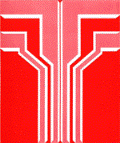Nebraska Academy of Sciences
Date of this Version
1972
Document Type
Article
Citation
Published in Transactions of the Nebraska Academy of Sciences, Volume 1 (1972).
Abstract
Study of radiographs and dissections prepared from nearly fifty Hyracodon jaws in the collections of the University of Nebraska State Museum have demonstrated the normal presence of the lower premolar one in immature jaws of this genus. This tooth is functional in the young animal but is lost with the deciduous dentition and is not replaced. In the upper dental series permanent premolar one was preceded by a deciduous premolar one, which is also characteristic of the tapirs, but is unusual in the other perissodactyla.
INTRODUCTION
The milk dentition of the Hyracodontinae is unique in several respects from the teeth of other families and subfamilies of the Order Perrisodactyla, and as a result of this, there has been some misinterpretation in the identification of premolars in the deciduous series of the Oligocene Hyracodon.
Information has been obtained through the study of a series of over one hundred hyracodont jaws in the University of Nebraska State Museum Study Collection. Fifty of these jaws were either x-rayed or dissected, in order to examine the development of the unerupted teeth.
The dental formulae for juvenile and adult hyracodonts are as follows: juvenile dentition: DI 3/3, DC 1/1, DP4/4; adult dentition: I 3/3, C 1/1, P 4/4, M 3/3.
DESCRIPTION OF INCISORS AND CANINES
The deciduous incisors and canines are relatively small, thin teeth, about one half the size of the permanent teeth (Plate 1, Fig. b). 13 and 13 were developed fully before the MI erupted. I1 and I1, and I2 and I3 followed in short succession after the permanent upper and lower molar one erupted. The canines of both the upper and lower dentition came into place after I3 and I3·



Comments
Copyright 1972 by the author(s).